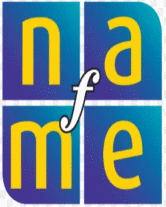Subject areas: Music, Art, and Language Arts
Estimated time of completion: 3 - 45 minute periods
Summary:
In a series of three short lessons, your students will learn about the important contributions made by Duke Ellington to the field of jazz, as well as some of the factors that led to his involvement in the field. As the students explore the language of the 1920's, connections will be drawn between popular expressions and the sounds created in jazz. Your students will craft an original poem using these words and expressions. Finally, your students will have the opportunity to respond to a piece of Duke Ellington's music through movement and art.
Objectives:
- The students will describe the life of Duke Ellington and his contributions to the field of jazz.
- The students will create an original poem using a variety of popular vocabulary from the 1920s.
- The students will create a painting in response to the composition "Mood Indigo" as performed by Duke Ellington's orchestra.
- a computer with Internet access
- one copy of the book Duke Ellington by Andrea Davis Pinkney
- one large piece of drawing paper for each child
- a variety of paints
- paintbrushes for each child
- newspapers
- a copy of "Mood Indigo" as played by the Duke Ellington Orchestra
- Assessment for "Learning Through The Duke" (optional)
Activity 1
- Play any Duke Ellington selection as the students enter the room. When all students have arrived, ask the students to describe what they were listening to. Accepting all ideas, record their responses on a chart.
- Add the following words to the chart: hot-buttered, sassy, cool, slick-steppin, Daddy-O, fine-as-pie, ivory eighty-eights, press on the pearlies, cats and ace. A fun song to listen to would be Cab Calloway's "Dr. Hepster's Dictionary."
- Ask the students to explain what they think the words on the chart have in common by suggesting a title for the chart.
- After the students have categorized the words, ask if they would like to add any more.
- Explain the meanings of the words listed in item #2.
- Have the students play with the words by stringing them together into interesting combinations and sharing. For example, they might say something like, cool...flashy...Daddy-O. Emphasize the value of playing with the sounds of the words.
- Ask children to take out a piece of paper and write down their ten favorite word strings/combinations.
- Play a selection by Duke Ellington as background music as you ask the students to describe what they are hearing using their word strings/combinations to create a poem. Tell them they may create new combinations as they write if they need to, combinations can be repeated, and they may write any number of combinations! It is important that the students know they are not limited to the words on the chart!
- Allow the students to share their poems.
- Lead a follow-up discussion about the word combinations selected by the students and how they relate to the music.
- On the computer, access the Jazz Kids Web site. Navigate to the Now and Then section. Read the biography of Duke Ellington, and listen to any samples of compositions by Duke Ellington available on the Web site.
- Explain to the students that you will be reading aloud a story about Duke Ellington. They should listen for ways in which the story you read is the same as the biography on the Web site, and ways in which the story is different.
- Read aloud Duke Ellington by Andrea Davis Pinkney.
- Lead a discussion about the similarities and differences between the two sources. Ask such questions as:
- What were some of Duke Ellington's early experiences with music? Were these experiences positive or negative?
- What were some of the important turning points in Duke Ellington's life?
- What did Duke Ellington find appealing about jazz?
- Remind the students that in the book Duke Ellington, the author wrote that "Duke painted colors with his band's sound."
- Tell the students that you will "Mood Indigo" for them. As they listen, ask them to think about the shapes and colors that the music reminds them of. If it helps, they may move their bodies.
- Spread newspapers on the desks to protect them from paint spills, then distribute paper, paintbrushes, and paints to each child.
- Explain that you will be playing "Mood Indigo" again. As the students listen, have them try to capture the music in paint.
- Allow the students the opportunity to share their paintings.
MENC: National Standards for Music Education
Content Standard 6: Listening to, analyzing and describing music demonstrate perceptual skills by moving, by answering questions about, and by describing aural examples of music of various styles representing diverse cultures' interconnectedness.

| Provided in partnership with NAfME |





